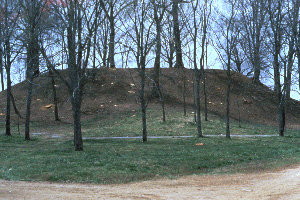Before the Revolutionary War, French fur traders came up river from New Orleans
and founded the city of St. Louis. St. Louis
rapidly became a trading center for furs, and
a jumping off place for exploration of the west.
In early 1803, the Louisiana Territory was deeded
by Spain to France, then a month later was deeded to America by France. This was the single largest
purchase of land on continental America, exceeded only by the purchase of Alaska from
Russia. A few months later Louis and Clark left St. Louis to explore the
western river system all the way to the coast of Oregon.
In 1817 the first steam boat landed at St. Louis and opened new
markets for rapid delivery of goods up and down the river. Joining the miners, traders and trappers,
were poor people eager to settle Missouri
and Arkansas.
They came from the east by riverboat, down the Ohio
River to the Mississippi, and others came the river from New Orleans. At St.
Louis they might have worked awhile to save a little money, then purchased wagons, horses and
food and set out down old Indian trails to settle
Southern Missouri and Northwest Arkansas.
In 1832 the federal government extended telegraph lines from St.
Louis westward to Kansas City, then south into Arkansas to the border
town of Fort Smith, Arkansas. That service road which followed old Indian
trails became known as the Old Wire Road, and thousands of families followed
it to build farms and towns and start new lives.
Before the telegraph was built, the road was better known as The Overland Butterfield Mail Route.
Ultimately there were two Old Wire Roads in Arkansas, one started from St.
Louis, MO to Fort Smith, AR and the other started at Fort Smith, AR and
extended east through Arkansas to the Mississippi River.
Read that part of history in the
Arkansas Portion of this record.


